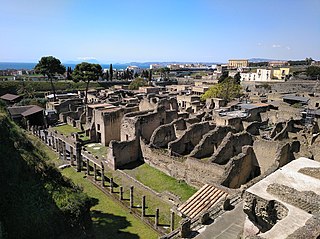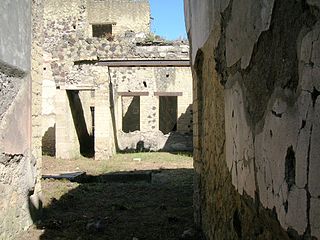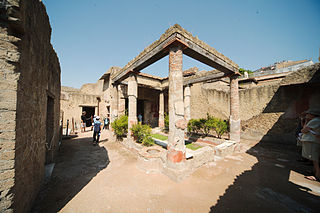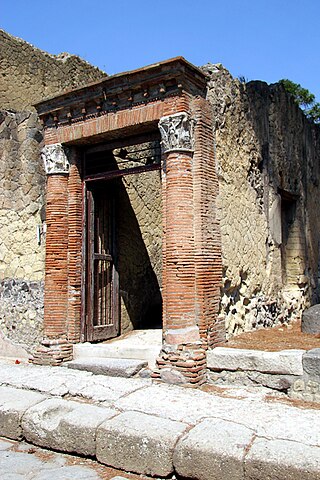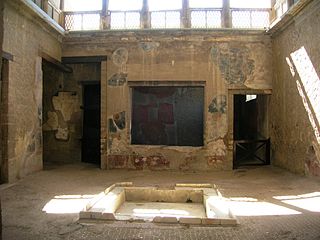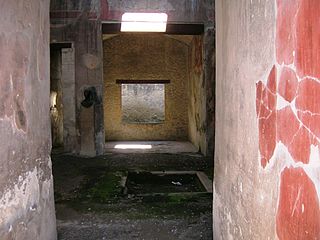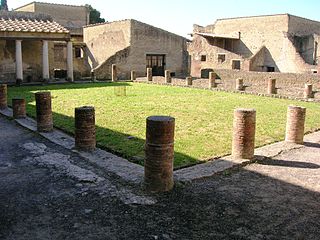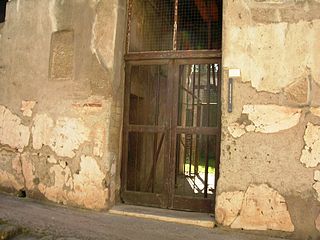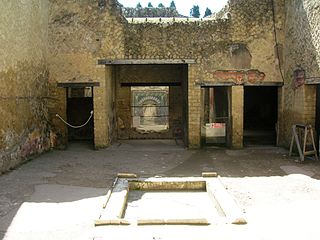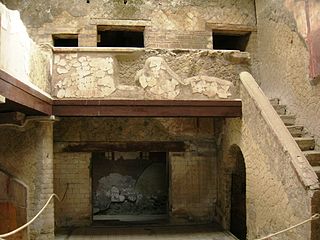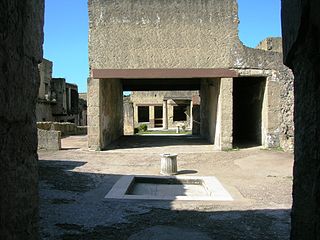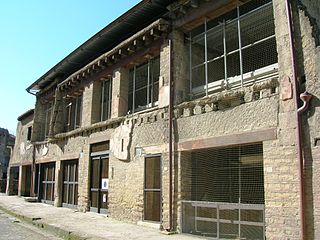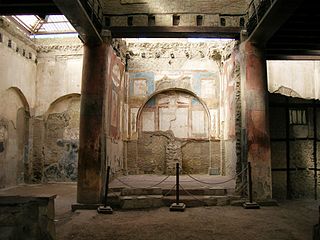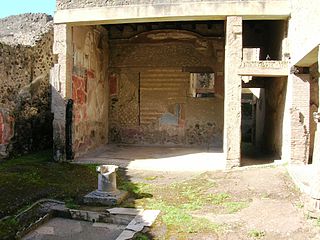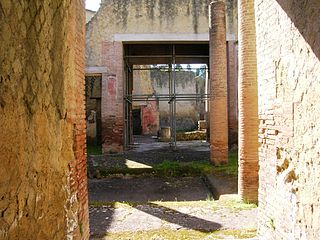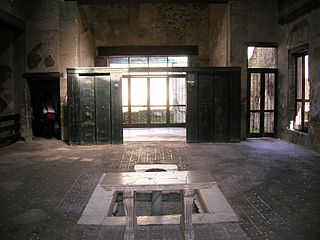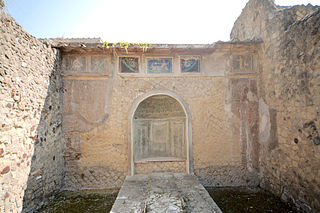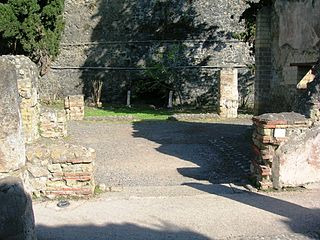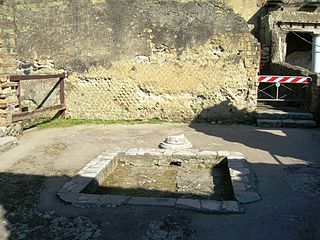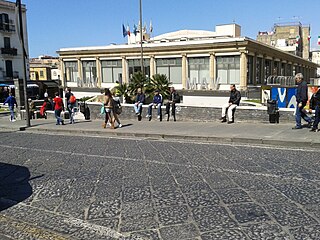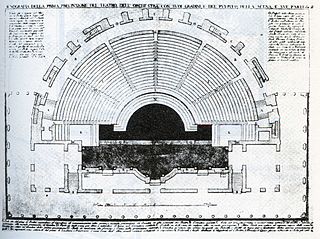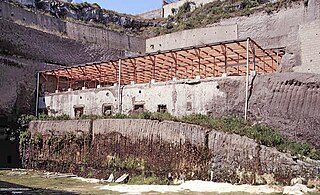Self-guided Sightseeing Tour #2 in Ercolano, Italy
Legend
Tour Facts
2.2 km
74 m
Experience Ercolano in Italy in a whole new way with our free self-guided sightseeing tour. This site not only offers you practical information and insider tips, but also a rich variety of activities and sights you shouldn't miss. Whether you love art and culture, want to explore historical sites or simply want to experience the vibrant atmosphere of a lively city - you'll find everything you need for your personal adventure here.
Activities in ErcolanoIndividual Sights in ErcolanoSight 1: Herculaneum
Herculaneum is an ancient Roman town located in the modern-day comune of Ercolano, Campania, Italy. Herculaneum was buried under a massive pyroclastic flow in the eruption of Mount Vesuvius in 79 AD.
Sight 2: House of the Wooden Shrine
The house of the Wooden Sacellum is a Roman house, buried by the eruption of Vesuvius in 79 and found following the archaeological excavations of ancient Herculaneum: it owes its name to the discovery of a small wooden cabinet.
Sight 3: House of the Corinthian Atrium
The house of the Corinthian Atrium is a house from the Roman era, buried by the eruption of Vesuvius in 79 and found following the archaeological excavations of ancient Herculaneum: it is so called because of the columns of the atrium, with a capital in the Corinthian order.
Sight 4: House of the Grand Portal
The house of the Great Portal is a Roman house, buried during the eruption of Vesuvius in 79 and found following the archaeological excavations of ancient Herculaneum: it is so called because of the entrance portal decorated with semi-columns with capitals adorned with Victories.
Sight 5: Samnite House
The Samnite House is a Roman house, buried during the eruption of Vesuvius in 79 and found following the archaeological excavations of ancient Herculaneum: it is one of the oldest houses in the city.
Sight 6: House of the Bronze Herm
The House of the Bronze Herm is a Roman house, buried during the eruption of Vesuvius in 79 and found following the archaeological excavations of ancient Herculaneum: it is so called because of the discovery inside of a bronze herm depicting a man.
Sight 7: Central Baths
The Baths of the Forum are a thermal complex from Roman times, buried by the eruption of Vesuvius in 79 and found following the archaeological excavations of ancient Herculaneum: they are so called because of their proximity to the city's forum.
Sight 8: House of the Wooden Furniture
The House of Carbonized Furniture is a house from the Roman era, buried by the eruption of Vesuvius in 79 and brought to light following the archaeological excavations of ancient Herculaneum: it is so called because charred furniture was found inside it by the effect of pyroclastic flows.
Sight 9: House of Neptune and Amphitrite
The house of Neptune and Amphitrite is a Roman house, buried during the eruption of Vesuvius in 79 and brought to light following the archaeological excavations of ancient Herculaneum: it is so called because inside it preserves a mosaic depicting Neptune and Amphitrite.
Sight 10: House of the Beautiful Courtyard
The house of the Bel Cortile is a house from Roman times, buried by the eruption of Vesuvius in 79 and found following the archaeological excavations of ancient Herculaneum: it owes its name to its perfectly preserved courtyard.
Sight 11: House of the Black Salon
The house of the Black Hall is a house from the Roman era, buried during the eruption of Vesuvius in 79 and brought to light following the archaeological excavations of ancient Herculaneum: it is so called because of an oecus totally frescoed in black.
Sight 12: House of the Bicentenary
The Bicentennial House is a Roman house buried during the eruption of Vesuvius in 79 and found following the archaeological excavations of ancient Herculaneum: the name derives from its discovery exactly two hundred years after the beginning of the first discoveries of Herculaneum.
Sight 13: College of the Augustales
The College of the Augustales is a religious building of the Roman era, buried during the eruption of Vesuvius in 79 and found following the archaeological excavations of ancient Herculaneum: inside, probably, the priestly college of the Sodales Augustales met.
Sight 14: House of the Tuscan Colonnade
The house of the Tuscan Colonnade is a Roman house, buried during the eruption of Vesuvius in 79 and found following the archaeological excavations of ancient Herculaneum: it owes its name to the Tuscan-type colonnade present in the peristyle.
Sight 15: House of the Two Atria
The house of the Two Atriums is a Roman house, buried during the eruption of Vesuvius in 79 and brought to light following the archaeological excavations of ancient Herculaneum: it is so called because of the presence inside of two atriums with impluvium.
Sight 16: House of the Wooden Screen
The house of the Wooden Partition is a Roman house, buried by the eruption of Vesuvius in 79 and brought to light following the archaeological excavations of ancient Herculaneum: it owes its name to the discovery, inside, of a partition, a sort of folding door in charred wood.
Sight 17: House of the Skeleton
The House of the Skeleton is a house from Roman times, buried during the eruption of Vesuvius in 79 and found following the archaeological excavations of ancient Herculaneum: it owes its name to the discovery of a human skeleton inside.
Sight 18: Casa del Genio
The House of the Genius is a house from Roman times, buried during the eruption of Vesuvius in 79 and brought to light following the archaeological excavations of ancient Herculaneum.
Sight 19: House of Aristides
The house of Aristide is a Roman house, buried during the eruption of Vesuvius in 79 and found following the archaeological excavations of ancient Herculaneum.
Sight 20: MAV Museo Archeologico Virtuale di Ercolano
The virtual archaeological museum, also known by the acronym of MAV, is an archaeological-virtual museum, located in Herculaneum, a few steps from the archaeological excavations, which tells the life of the Roman cities at the foot of Vesuvius, just before the eruption of 79: it is, of its kind, one of the most important in the world.
Sight 21: Teatro romano di Ercolano
The Herculaneum Theatre is a theatre in the city of Ancient Rome of Herculaneum. Since 1997 it has been part of the World Heritage Site called "Archaeological Zones of Pompeii, Herculaneum and Torre Annunziata".
Sight 22: Villa dei Papiri
The Villa of the Papyri was an ancient Roman villa in Herculaneum, in what is now Ercolano, southern Italy. It is named after its unique library of papyri scrolls, discovered in 1750. The Villa was considered to be one of the most luxurious houses in all of Herculaneum and in the Roman world. Its luxury is shown by its exquisite architecture and by the large number of outstanding works of art discovered, including frescoes, bronzes and marble sculpture which constitute the largest collection of Greek and Roman sculptures ever discovered in a single context.
Share
How likely are you to recommend us?
Disclaimer Please be aware of your surroundings and do not enter private property. We are not liable for any damages that occur during the tours.
GPX-Download For navigation apps and GPS devices you can download the tour as a GPX file.
